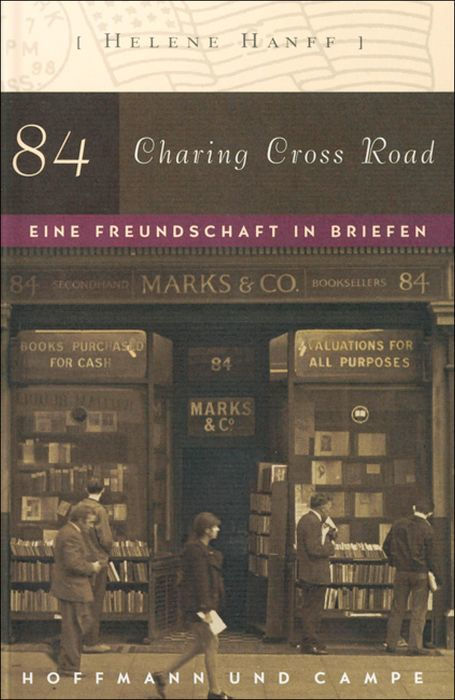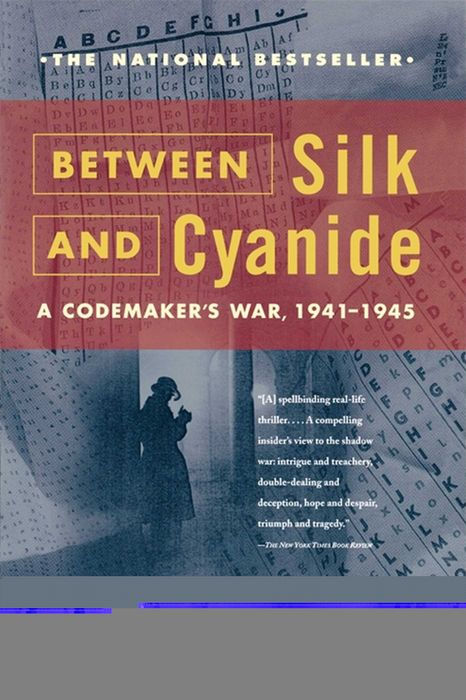How to Lose a Reader
Reading for pure pleasure seems to have slipped by the wayside in recent years, but a common cold– natures' way of telling me to slow the hell down– waylaid me. I relaxed with a friend. It's good when another's bookshelf looks at least as interesting as my own, so there I am facing Jeffrey Deaver, James North Patterson, and a host of others. Literary historicals like The Name of the Rose and The Rule of Four intrigue me, so I pluck up a book that compares itself to these along with Possession and A Case of Curiosities.
Sixty-some pages later, I toss the book aside. It isn't a bad book and if I find myself cast away on a desert island with a trunkful of National Enquirers, I'll certainly read it.
| I don't name the title in question, partly because it isn't a bad book– it simply didn't engage me. Moreover, I didn't finish it– It might burst into excitement mere pages after I abandoned it. Besides, I don't like the idea of criticizing another writer, a practice that might come back to haunt one. |
The problem is nothing happens. It's like Waiting for Godot set in New York and London. To illustrate chapter-by-chapter,
- Edward, bored and boring options trader, is asked to uncrate ancient books.
- He's invited to a party, but falls asleep.
- He plays a video game, then falls asleep.
- He returns to unpack books and the reader falls asleep.
Sure, the writing is clever. I can see what looks like setups for future plot points. But worse than the lack of forward motion, I feel no bond with the main character. Burdened with a Kerouac-like lack of direction, the guy's not particularly likable. I'm well aware the book could suddenly take off but reading time is precious. Instead of plucking another book off the shelf, I seek a recommendation.
My hostess hands me two books, non-fiction. She tells me there's an unlikely link between them.
The first is 84 Charing Cross Road by Helene Hanff. It's a series of actual letters between the author and a London bookshop between 1949 and 1969.
Wait, stay with me here. Within a handful of pages, this little book does what the novel above failed to do– it captures the intellect and the emotions.
The book isn't about the war, but it quickly capsulizes post-war America and Britain. Rationing in the US ended in 1946, but while North America poured millions into rebuilding Germany and Japan, British citizens were starving, subsisting on two ounces of meat a week and one egg a month. Stiff upper lip, they soldiered on with the importance of maintaining an ordinary life. That's only background… the real story is yet to come.
How does this relate to crime writing? In the early 1950s, Helene Hanff wrote for Ellery Queen. I don't mean the magazine, I mean E-l-l-e-r-y Q-u-e-e-n. More than once I thought of Dale Andrews. While he'll appreciate that special history, anyone can admire this fast read.
The other book is Between Silk and Cyanide by Leo Marks. I don't like war novels; I don't like them at all. Lose a friend or two and war doesn't seem entertaining. But I appreciate tales of espionage from Erskine Childers' classic The Riddle of the Sands to Alistair MacLean's brilliant novels.
Between Silk and Cyanide is fact, not fiction, told wryly with a self-deprecating charisma. It's about code-breaking and as those with deep computer backgrounds know, the British led when it came to codes and cracking them.
See, after World War I, Secretary of State Henry Stimson shut down the military code-breaking department, MI-8, famously saying "Gentlemen don't read other gentlemen's mail." He took steps to punish cryptologist Herbert Yardley, who considered monitoring coded messages vital.
Franklin Roosevelt recognized the need for intelligence and worked with former classmate William 'Wild Bill' Donovan and famed Canadian spymaster William 'Little Bill' Stephenson, a man considered the inspiration for fictional spies such as James Bond. However, the OSS found itself lagging far behind its allies.
I Spy with my Little Eye
In the 1970s, whenever a television series ran thin on plots, the writers suddenly revealed their hero(ine) secretly worked for the CIA. Thus we found the likes of Jessica Fletcher conspiring with British Intelligence against the KGB, a ghastly plot device that burdens lackluster television today.
I promised to connect 84 Charing Cross Road with a book about spies. The London address happened to be that of Helene Hanff's bookshop, Marks & Co, and their son, 22-year-old Leo Marks, turned out to have a gift with cryptography and wrote the book Between Silk and Cyanide.
For young Marks' initial interview, his superiors devised a sort of test. They handed him a coded message and a key and left him to his devices. An hour later, they looked in on him and again an hour after that. With dismay, they said, "Our code girls decrypt these in twenty minutes."
Marks persisted and just before closing handed them the decoded message. His superiors sighed, obviously disappointed. As Marks turned to leave, they asked him to return the key.
"What key?" he asked.
"The cypher key. Surely we gave you the key for it?" they said.
Er, no, they hadn't. Marks hadn't decoded the message given the key, he'd actually cracked the code as if he'd been a foreign spy.
Marks asked, "You don't actually use this code, do you?"
"Not any more."
And thus Marks went on to rattle SOE, the Special Operations Executive, and battle its entrenched 'good enough for us' director who detested innovation, even when lives were lost.
Since Marks wasn't permitted to tell anyone where he worked, speculation spread among neighbors he was avoiding military service. His family endured white feathers in their mailbox– the insidious shaming device the British used to call others cowards.
I haven't reached the halfway point, but my hostess gave it the greatest compliment when she said she hadn't wanted it to end.
The Bottom Line
So, when nothing on the bestseller list appeals to you, consider a pair of books, Helene Hanff's 84 Charing Cross Road and Leo Marks' Between Silk and Cyanide.
They may be non-fiction, but they're damn fine storytelling.


It's always good to get good books recommended!
ReplyDeleteThanks.
Leigh - an Interesting But Useless Fact is that Marks and Co is - or was - on the ground floor of the building where (fictionally) The Circus and George Smiley lived and had their being.Small wonder that Leo Marks grew up to be a spymaster.
ReplyDeleteInteresting, Neil. I had Smiley in mind when I was writing about Little Bill Stephenson.
ReplyDeleteThanks, Janice. Some books are just too good not to be mentioned.
I have read 84 Charing Cross and really liked it. There was also a great, though little known, movie version starring Anne Bancroft and Anthony Hopkins.
ReplyDeleteThe exchange of letters has also been used at times to tell fictional stories. One of my favorites, that I read as a child, involved the exchange of letters between two old friends, one of whom was in Nazi Germany. It had a really nice twist to it. I think the title was "Adresat Underbeskat," but this is just from memory. A Google search does not seem to help. Anyone else remember the story?
Dale, I somehow half expected you'd have read Hanff's book. Your broad perambulations are amazing.
ReplyDeleteHope you get rid of the cold soon.
ReplyDeleteI enjoyed the article and really admire someone who can read when sick. When I’m sick all I can do is watch bad, really bad TV shows.
84 Charing Cross is a remarkable book whichI have read a number of times. The movie is absolutely charming.
ReplyDeleteLouis, that's both poignant and funny. The good news is I don't have television, but I know what you mean, anesthetizing the mind.
ReplyDeleteTerrie, although I feel I'm late to the party, it is a grand book. Between Silk and Cyanide has more about Frank Doel and other denizens of 84 Charing Cross Road including an intriguing (and intimate) moment when Frank let his guard down.
Okay, I couldn't get to this until I finished my Tuesday column -- but that story I remembered is titled "Address Unknown" and is (like lots of things written in the 1930s) on line at the following address --
ReplyDeletehttp://www.acobas.net/teaching/textbook/address/addressunknown.pdf
As noted, it is comprised completely of letters and is truly a gem.
Wonderful stories, both of them. Pleased to know others have enjoyed them.
ReplyDelete(Sadly, 84 Charing Cross Rd is now occupied by a fast-food outlet.)
PS
ReplyDeleteDale, when reading 84 CCR, Helene Hanff reminded me of Lilly Tomlin, and I'd so hoped she'd be cast in the film. But, not to be - Mel Brooks bought the film rights and gave them to his wife, Anne Bancroft, as a gift. (sigh) Romantic, but I still picture Lilly...
Thanks, Dale, I'm downloading… in fact I just downloaded Taylor's book, complete with illustrations, I see. Thank you!
ReplyDeleteABA, I very much like Lily Tomlin's characters. I recall her in a film with Steve Martin.
I read that 84 Charing Cross was to come under the wrecking ball but friends of the old shop managed to register it as a historical address.